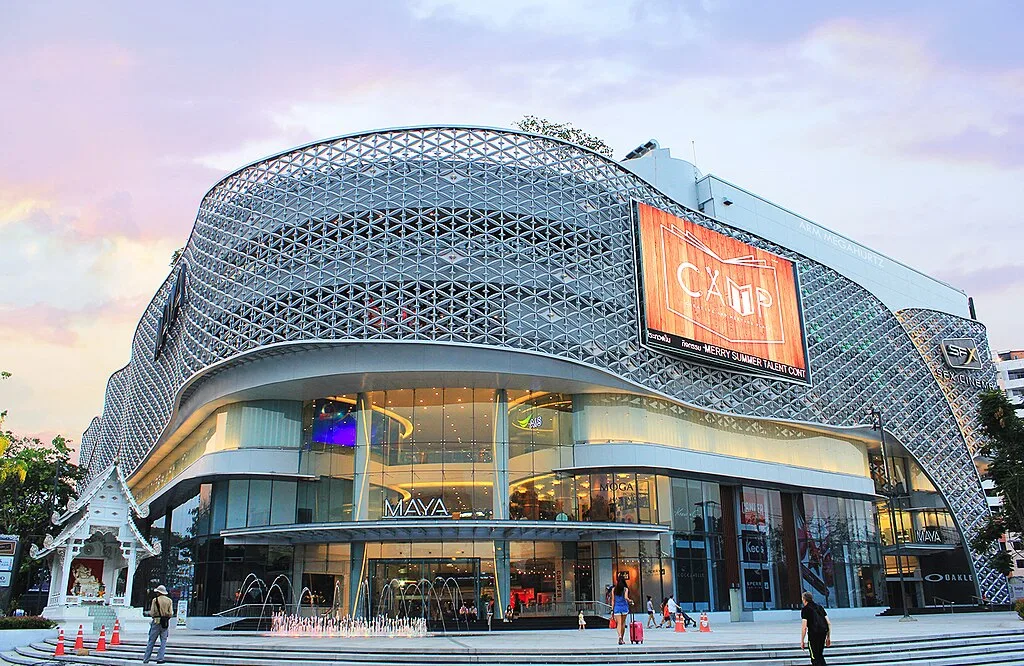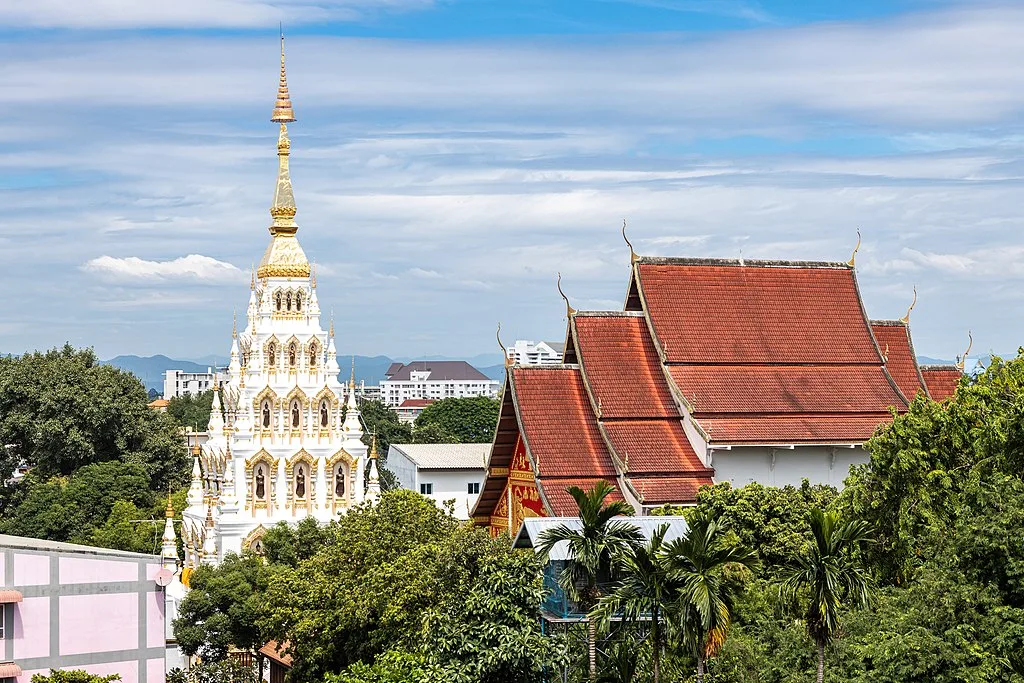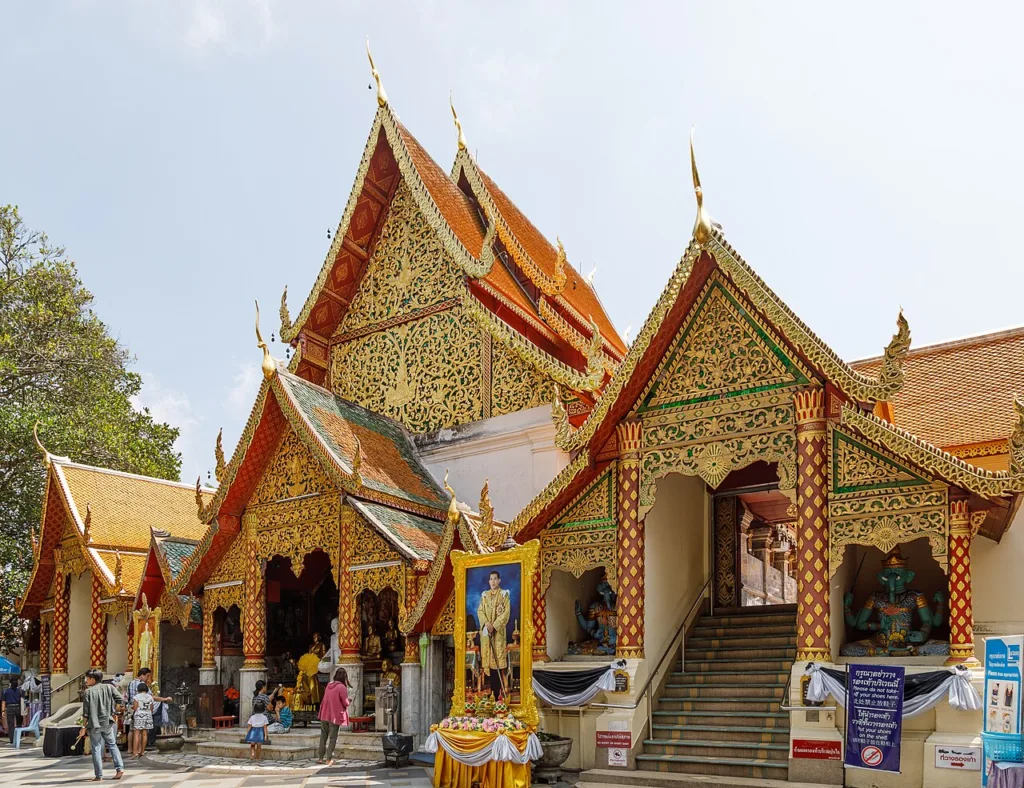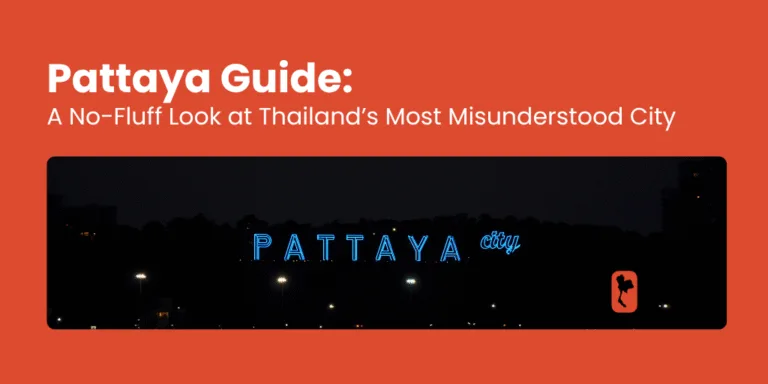There’s something about Chiang Mai. It’s not just the ancient temples or the mountain air it’s the way the city manages to feel both calm and quietly buzzing at the same time. Whether you’re here for a week of exploring or planning to stay a little longer as a remote worker or even an expat, this Chiang Mai Guide will walk you through what to expect, what to avoid, and what might just surprise you.
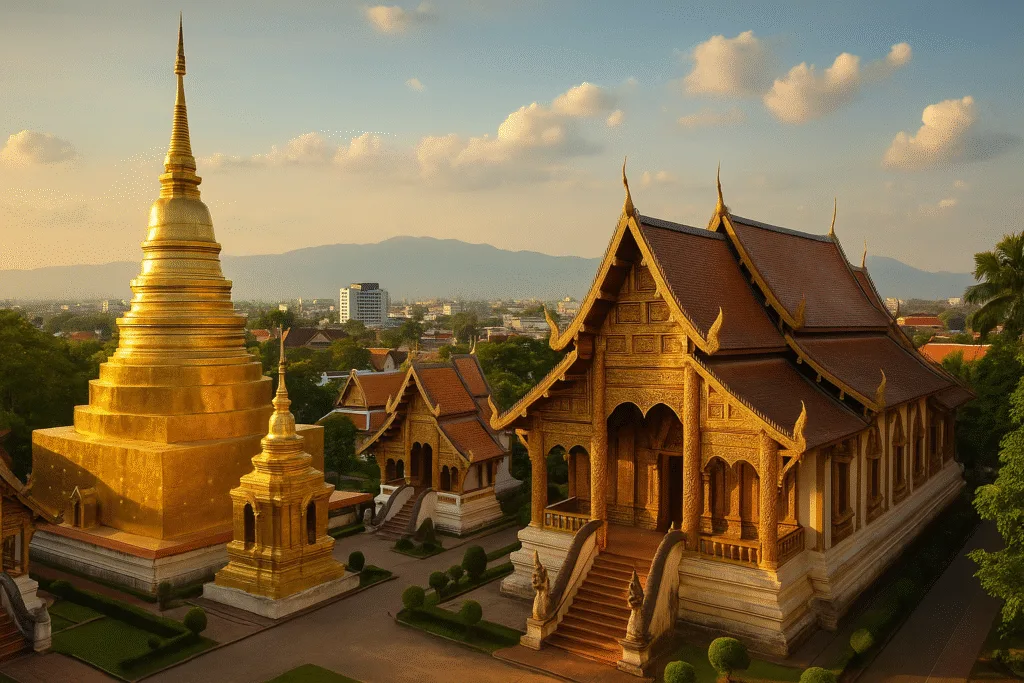
What Makes Chiang Mai Different? Lets Start with the Chiang Mai Guide
Chiang Mai isn’t Bangkok. It doesn’t pretend to be. The traffic is lighter (though it’s still very much a thing), the people generally a bit more laid-back, and the whole vibe… a little slower, a little softer. You can find your rhythm here. But it might take a few days. That’s normal.
Some visitors expect “cheap paradise” and are surprised when things feel more nuanced. Yes, you can live well on a moderate budget. But no, it’s not untouched or undiscovered. It’s a real city – quirky, imperfect, sometimes messy but somehow still charming in its own way.
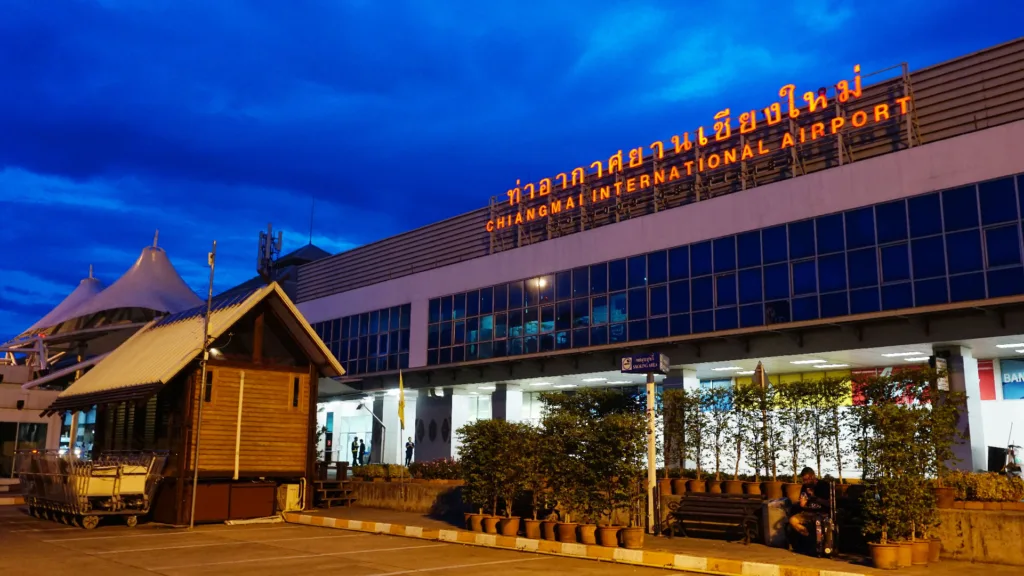
Getting To and Around in Chiang Mai
Chiang Mai International Airport (CNX) is small but functional. Most international flights are available to other Asian countries but this slowly changes, e.g. Etihad will fly from Abu Dhabi directly starting November 2025. If you can’t book a direct flight to Chiang Mai your next best choice is to arrive in Bangkok and take a short 1-hour flight with one of the cheap domestic airlines.
If you prefer slower, eco-friendly and more mindful traveling you can use alternative transportation. Probably the most famous one and an attraction itself is the sleeper train departing from Bangkok, cutting through the old capital Ayutthaya, passing the ancient cultural-center Sukhothai and finally bringing you to Chiang Mai. This way of traveling deserves it’s own guide!
Quick facts:
- Choose from 3 classes
- The ride takes 12-15 hours
- There are “old” and “new” trains
- With the right preparation and accessories you’ll have a pleasant and unique experience
Your other choice could be the good old bus. Don’t think the typical bus you know from back home, Thailand has a unique way of equipping their busses! You can book your Trip directly with the various bus companies or use a booking portal like 12go.asia.
Quick facts:
- Choose from different types of busses
- The ride takes 15-16 hours
- It can be the cheapest way of getting around
Congratulations you made it! Welcome to Chiang Mai! This Chiang Mai Guide will help you navigate the “Rose of the North”.
After your arrival we recommend taking Taxis or Grab (Southeast Asia’s version of Uber), they’re are easy to use and reasonably priced.
Taxis only exist to take you from the airport to your destination.
For everyday transportation you should pick one of these:
- Grab is convenient, but prices have gone up lately.
- Songthaews (red pickup trucks) are quirky, shared taxis with unpredictable route but they get you from A to B.
- Scooters are popular but not for everyone. If you’ve never ridden one, this probably isn’t the place to learn. Honestly.
Where to Stay in Chiang Mai
The city is spread out, but three areas tend to dominate the conversation:
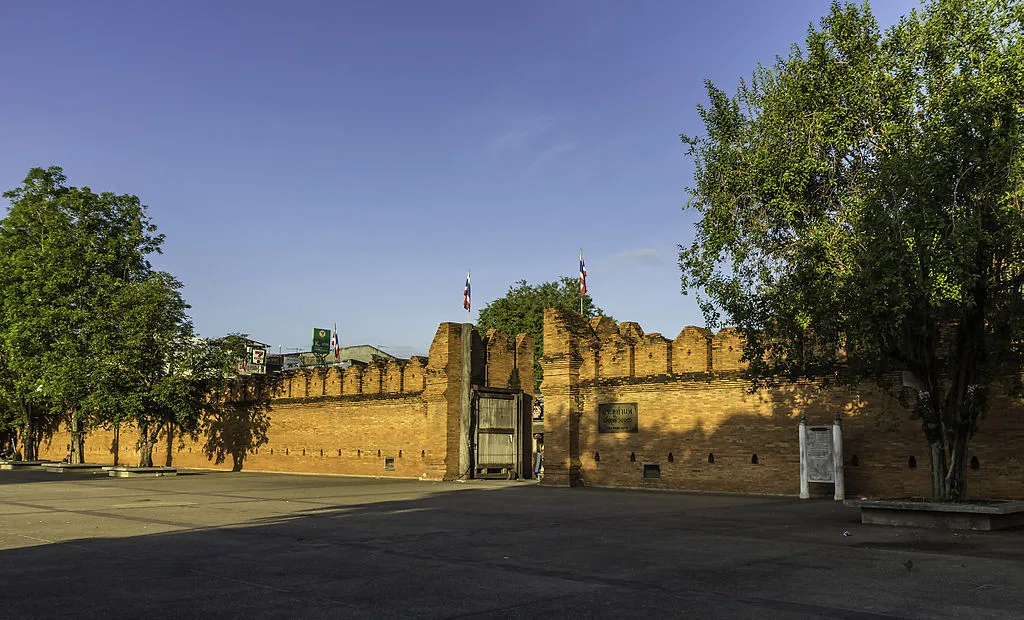
Old City
Living inside the Old City is like pressing pause. The streets are narrower, the pace is gentler, and the days seem to stretch out a little longer. Morning almsgiving still happens here. So does late-night pad kra pao. It’s a place of contradiction: sacred stupas beside buzzing bars, ancient stone alongside tangled wires.
The neighborhood is surrounded by a square moat and the remains of centuries-old brick walls. It’s not just visually distinctive, it’s emotionally grounding. You feel like you’re living in the history, not just visiting it.
Most homes here are older Thai-style houses, compact townhomes, and a scattering of boutique condos tucked between alleyways. Don’t expect a modern high-rise with a rooftop pool here. But do expect charm, walkability, and a deep sense of place.
Nimmanhaemin (Nimman)
Welcome to Nimman, where espresso machines outnumber street vendors and co-working spaces feel more common than convenience stores. This neighbourhood has earned a reputation as Chiang Mai’s modern heartbeat, a place where sleek condos meet start-up energy, and Western comforts are just a short stroll away.
Tucked between the Old City’s moat and the forested hills of Doi Suthep, Nimman is more than a road, it’s a scene. A lifestyle. And for many newcomers, it’s their first impression of Chiang Mai’s more cosmopolitan side.
Santitham
Living in Santitham is like stepping into Chiang Mai without the filter. You’ve got street vendors on nearly every corner, night markets that don’t cater to tourists, and apartments that lean more practical than pretty. It’s not polished, but it has personality, loads of it.
The roads are a bit messier than Nimman’s, and you’ll hear more Thai than English as you walk around. There are old-style barbershops next to Muay Thai gyms. Gritty karaoke joints tucked behind trendy cafés. Students, working-class Thais, budget-conscious expats, and the occasional digital nomad mix together without much fuss.
You’re not going to find a shiny co-working tower here, but you will find fast Wi-Fi, friendly neighbors, and a bowl of noodles that hits the spot for ฿40.
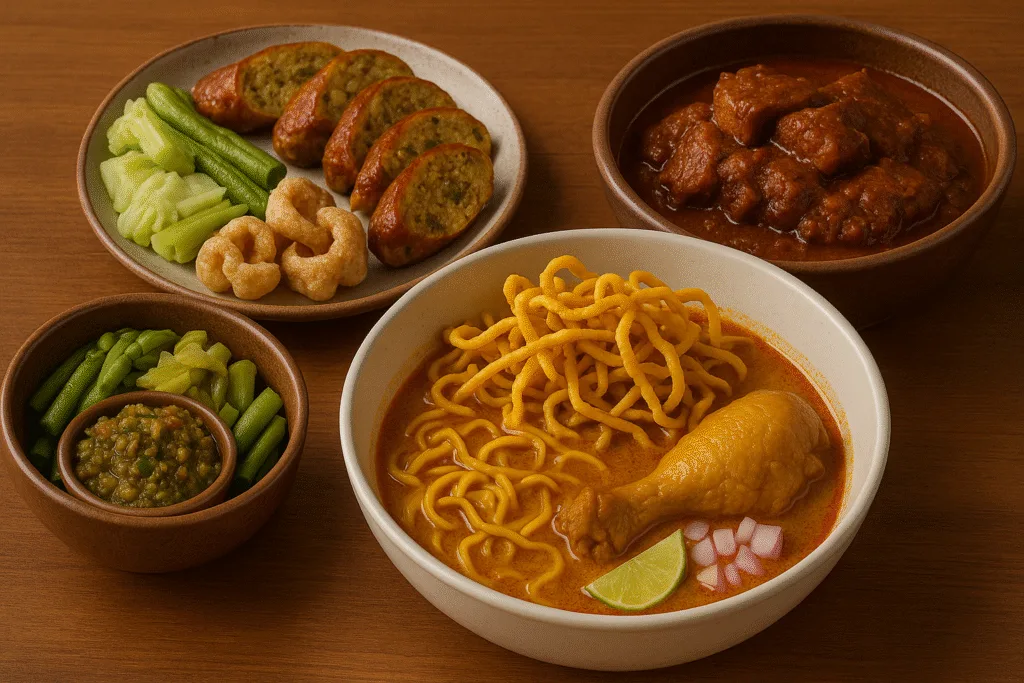
Food: From 40 Baht Noodles to Fine Dining
Chiang Mai is a food city. And it doesn’t take itself too seriously. You can go from a 50-baht noodle shop to an upscale dinner with a view—sometimes on the same street. That casual duality is part of what makes it so appealing.
Eat like a local, feel like a local
You’ll find local street food stalls lining almost every corner, especially near markets and temples. One evening you might find yourself sitting on a red plastic stool eating grilled pork skewers at the Chang Phuak Gate Night Market, often called the “North Gate,” where “Cowgirl Hat Lady” dishes out famously tender Khao Kha Moo (braised pork leg on rice). It’s been featured by food icons like Anthony Bourdain, and the long line of locals should tell you everything you need to know.
Then there’s Khao Soi, Chiang Mai’s signature dish. It’s a rich, creamy, curry noodle soup with crispy egg noodles on top and tender chicken or beef below. You’ll see it on every foodie list. Try it at Khao Soi Khun Yai, hidden behind a white gate near the Old City moat. Or go a little fancier at Khao Soi Mae Sai, which some locals claim tastes closest to what they grew up eating.
Craving more northern Thai flavors? Keep an eye out for this local dishes:
- Nam Prik Noom – A spicy green chili dip served with boiled veggies and crispy pork rinds.
- Sai Oua – Chiang Mai’s iconic herb-laced sausage. Rich, garlicky, and deeply flavorful.
- Gaeng Hang Lay – A slow-cooked pork belly curry with ginger and tamarind. Hearty and slightly sweet.
Modern Eats and Global Comforts
While the local food scene is thriving, Chiang Mai also caters generously to international palates. There’s a booming brunch and coffee culture just walk through Nimman on a Sunday morning and count how many cafés are serving shakshuka, smoothie bowls, and third-wave coffee.
- Rustic & Blue has become a staple for expats and digital nomads, offering everything from pulled pork sandwiches to quinoa salads.
- The Larder Café is a quiet gem for fresh pastries and well-balanced Western breakfasts.
- Beast Burger (yes, that’s really the name) gets rave reviews for juicy patties and proper buns—plus their truffle fries are no joke.
- For a plant-based option, Goodsouls Kitchen does vegan comfort food so well you might forget there’s no meat or dairy involved.
Things to Do (and Maybe Not Do)
There’s more to Chiang Mai than elephants and night markets.
Must Try (or at least consider):
- Doi Suthep: The iconic hilltop temple. Yes, it’s touristy. But still worth it.
- Doi Inthanon: Thailand’s highest peak. Cooler air, waterfalls, and fresh mountain vibes.
- Café hopping in Nimman or the Old City
- Muay Thai gyms or yoga studios, depending on your mood
- Night markets like Saturday Walking Street or the quieter Jing Jai Market on Sundays
Maybe Skip:
- Tiger Kingdom (serious ethical concerns)
- Tuk Tuk tours – it’s a common scam
- Elephant camps that don’t advertise “no riding” clearly
Internet, Co-Working & Digital Nomad Life
Chiang Mai built its reputation as a digital nomad hub for good reason. For more than a decade, remote workers, online entrepreneurs, and creators of all stripes have been drifting in and out of this city and many never really leave.
It’s not just the affordability, though that certainly helps. It’s the ease. The “plug in and go” feeling. You land, grab a SIM card at the airport, rent a motorbike, and by day two you’re already settled in a café with fast Wi-Fi, a decent coffee, and a view of Doi Suthep in the distance.
Internet speeds are solid. Fiber optic lines run through most neighbourhoods, and even basic apartments often come with 100 Mbps or higher as a standard. If you’re particular, you can always pay a bit extra to upgrade your line. Outages are rare, and if one happens, nearby co-working spaces usually remain unaffected.
Co-working Spaces: Not Just Desks and Wi-Fi
Chiang Mai’s co-working scene is alive and well. You’ll find all types: quiet, focused hubs, artsy lofts, social spaces that double as networking hives. Here are a few of the standouts:
- Punspace (Nimman & Tha Phae Gate) – One of the originals. Reliable, no-frills, and always buzzing with developers and startup folks.
- Yellow Co-Working – Sleek, spacious, and modern with 24/7 access. It’s ideal if you like an aesthetic work environment with social events thrown in.
- Alt_ChiangMai – A newer entrant with a more boutique, curated feel. Great community vibe, excellent coffee.
Prices typically hover around 2,500–4,000 THB/month, depending on the package, and many offer day passes or hourly rates if you just want to dip in. Some even offer community perks think language exchange nights, skill-share sessions, or weekend hikes.
Laptop-Friendly Spots
Prefer a more flexible setup? Chiang Mai’s café scene doubles as a remote work ecosystem.
You’ll find dozens of laptop-friendly cafés, especially in Nimmanhaemin, Santitham, and parts of the Old City. Some cafés—like Graph Café, Ristr8to Lab, or Nine One Coffee. They offer thoughtfully designed seating, plenty of outlets, and a balance between ambient buzz and peaceful work zones.
That said, not every café welcomes laptops all day. A few (especially the more “Instagrammable ones”) might give you side-eye if you camp out too long. It’s good practice to buy something every couple of hours, and always check if there’s a no-laptop policy during peak times.
Finding Your People (or Not)
Nomad life in Chiang Mai isn’t just about where you work. It’s about the people you meet and that can be both amazing and mildly awkward.
There are Facebook groups like Chiang Mai Digital Nomads or Nomad Coffee Club where events, meetups, and co-living opportunities are constantly popping up. You’ll see workshops on crypto, AI tools, YouTube monetization… the works. It’s an eclectic mix of people doing genuinely interesting things.
At the same time, it can feel cliquey at first. Like any city with an established transient community, social circles can be insular. Some groups feel like they’ve known each other for years and they probably have. But don’t let that put you off. Show up once or twice, ask a question, offer to help with something it opens up.
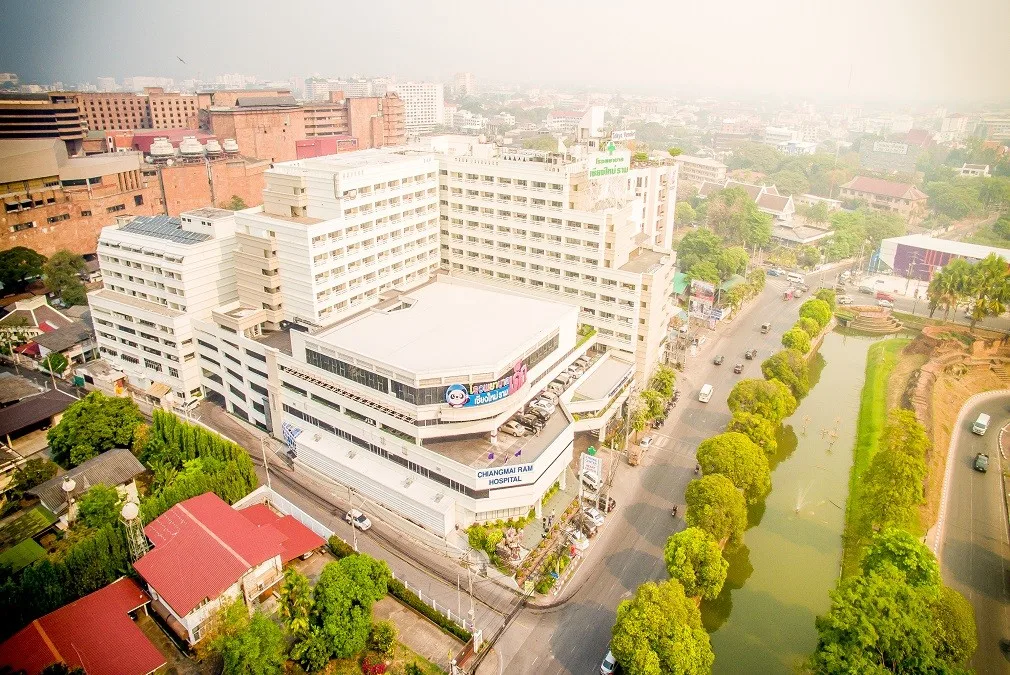
Healthcare and Safety
Chiang Mai has just been awarded as the safest city in South East Asia!
Hospitals, Clinics and Emergency Care
There are two international-standard hospitals: Bangkok Hospital Chiang Mai and Chiang Mai Ram Hospital. Both offer a high level of care, English-speaking staff, and modern facilities. They’re not the cheapest options, but if you need quick, reliable treatment especially for anything more than a sprained ankle they’re where most expats and travellers go.
For less serious things like minor fevers, stomach bugs, or prescription refills take a look at local clinics and pharmacies, they”re are everywhere and surprisingly efficient. You can walk into most pharmacies, describe your symptoms, and walk out with what you need in under five minutes. It’s a little odd at first (especially if you’re used to stricter prescription rules), but it works.
Chiang Mai has a Hospital just right for your needs:
- Chiang Mai Ram Hospital: Centrally located, well-equipped, and popular with expats. They have specialist departments for just about everything: dermatology, orthopedics, pediatrics, etc. It’s usually the first choice for any kind of treatment
- Bangkok Hospital Chiang Mai: Part of the Bangkok Hospital Group, this one is a little further from the Old City, but ultra-modern and very polished. Think marble floors, coffee kiosks, concierge service… the works. Expect premium pricing.
- Rajavej Hospital: A smaller private hospital with more affordable rates. Service is decent and English is spoken, though perhaps not as fluently as in the bigger facilities.
- Maharaj Nakorn Chiang Mai Hospital (Suandok Hospital): This is the government-run teaching hospital affiliated with Chiang Mai University. It’s massive and has specialists in nearly every field, but it’s also crowded and not exactly a walk-in-and-be-seen sort of place. That said, it’s often where you’ll be referred for more complex procedures.
Emergency services are available (dial 1669 for an ambulance), but response times can vary especially during rush hour or in rural areas outside the city center. If it’s a real emergency, getting a ride straight to the hospital might be faster.
Safety on the Streets
Chiang Mai feels very safe. Violent crime is extremely rare, and petty theft is uncommon but not unheard of. Basic travel precautions apply: don’t leave valuables on your motorbike seat, be cautious in dark alleys, and lock your room.
The real danger? Motorbikes.
Seriously, if you’re going to rent one (and many do), wear a helmet a real one, not the flimsy half-shells. Learn to drive defensively. Chiang Mai’s traffic isn’t crazy by Thai standards, but people still drive unpredictably. Rain makes roads slick. Potholes happen.
Most hospital visits for tourists and expats start with a scooter crash. Even minor ones can lead to big bills or long recoveries.
Safety, Scams & Street Smarts
Chiang Mai is widely considered one of the safest cities in Southeast Asia, and for the most part, that reputation holds true. Violent crime is incredibly rare, and walking around, even at night, feels safe in most neighborhoods. That said, petty scams and low-level cons do exist, especially in areas with high tourist traffic like the Old City, Tha Phae Gate, and around popular temples.
One of the most common scams involves tuk-tuk or red truck (songthaew) drivers offering “special” or “free” city tours. These usually end with a detour to a tailor, jewelry store, or overpriced souvenir shop where they earn commission. Politely decline and move on. Another is the classic “the temple is closed” trick someone approaches you near a well-known temple and says it’s closed for a holiday or cleaning, then tries to redirect you to a less-known site (usually with a sales pitch waiting).
There are also motorbike rental scams, especially near tourist zones. Some unscrupulous operators will claim you scratched the bike and demand steep payments. Always photograph your bike thoroughly before leaving the shop, and stick with reputable rental companies with lots of Google reviews. Occasionally, you might run into gem or art scams, where sellers claim to offer rare stones or limited-time deals. If it feels too good to be true, it probably is.
Digital nomads and longer-stay expats sometimes get caught in apartment deposit schemes where landlords withhold all or part of the deposit for exaggerated cleaning or damage claims. To avoid this, document everything when moving in, and work through rental agents or places with strong expat reviews.
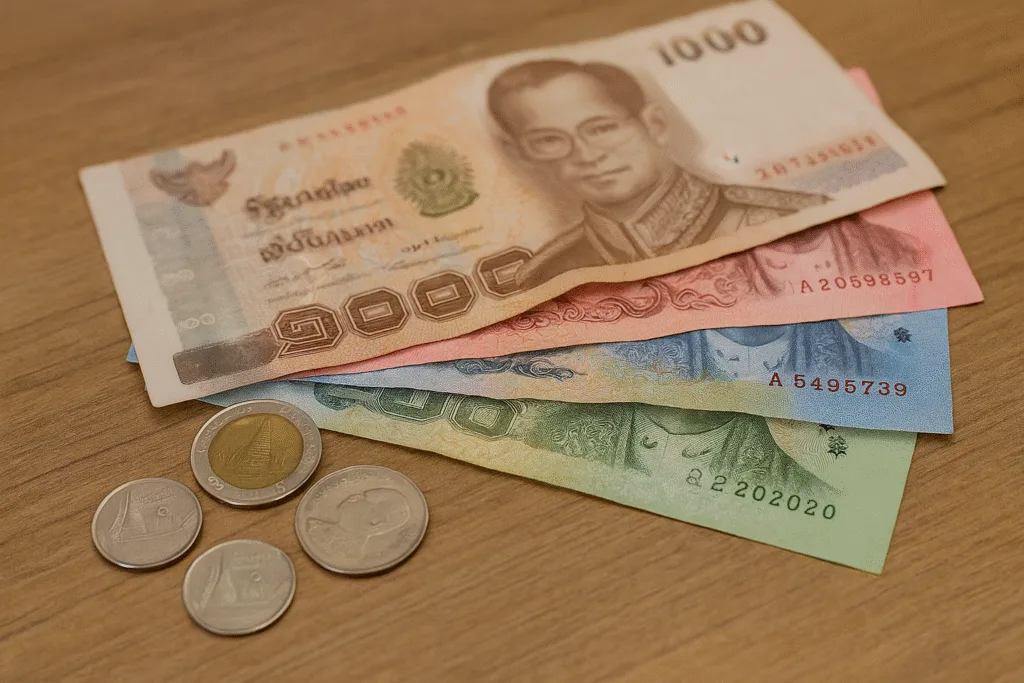
Cost of Living: Realistic Expectations
This part really depends on you. If you’re eating street food, renting a small studio, and not partying every night, you might live on $700 to $900 per month. That’s the classic budget backpacker or minimalist digital nomad lifestyle. Think modest apartment, no-frills scooter rental, and mostly Thai food. It works, and for some people, it’s all they need. Rent in local-style apartments outside the touristy areas can be as low as 5,000 to 8,000 THB per month (around $135 to $215), and utilities rarely exceed 1,500 THB per month unless you’re running the A/C constantly.
But add in a few Western comforts like imported wine, specialty groceries, air-conditioned co-working spaces, or premium gym memberships, and it adds up fast. A bottle of decent wine might set you back 700 to 1,200 THB. A night out with cocktails or craft beer can easily cost more than in Europe or the U.S. If you’re cooking at home and sticking to local ingredients, groceries are affordable. But shop at Rimping and your bill could triple compared to local markets.
A more balanced, comfortable lifestyle might include a studio or one-bedroom in Nimman, daily café visits, weekend getaways, and the occasional splurge. That kind of setup usually falls around $1,200 to $1,500 per month for a solo person. Many digital nomads fall in this zone, especially once you factor in a co-working pass (around 2,500 to 4,000 THB per month), scooter rental (roughly 2,000 to 3,000 THB per month), and café-hopping. Coffee and brunch can add up quickly.
For couples or those staying long term, sharing costs helps. A comfortable two-bedroom condo with a pool and gym might cost 12,000 to 18,000 THB per month. You’ll often find great value if you’re willing to stay slightly outside the main areas. Chiang Mai also offers strong value for families, with affordable childcare, bilingual kindergartens, and a growing international school scene.
It’s worth noting that health insurance, visa runs (if applicable), and travel excursions such as visiting Pai, Chiang Rai, or even hopping down to the islands aren’t daily costs, but they do factor into the bigger picture. A few months here can feel extremely affordable. Still, longer stays require a more realistic buffer, especially if you’re not earning in baht.
In short, yes, Chiang Mai is cheap by Western standards. But it’s easy to spend like you’re still in Berlin or San Francisco if you’re not mindful. That said, it remains one of the few places where a freelancer can live well, work productively, and save a bit too, all without feeling like you’re cutting corners.
Living long-term
Settling in Chiang Mai for the long haul is something many come to consider, even if they didn’t plan to. What often starts as a three-month trial or a casual “work-from-Thailand” experiment quietly evolves into a semi-permanent or even permanent lifestyle. It makes sense. The city has just enough infrastructure to be comfortable, just enough unpredictability to stay interesting, and a rhythm that doesn’t burn you out.
For long-term stays, housing becomes more than just a place to crash. You might start in a serviced apartment or Airbnb, but before long, you’ll find yourself browsing Facebook Marketplace or working with local agents to find a one-bedroom or a house with a bit of character. Maybe a balcony, maybe a pool, or even a view of Doi Suthep if you’re lucky. Prices remain far below Western standards. A modern condo in a well-connected area like Nimman or Santitham can cost between 10,000 and 18,000 THB per month. If you move a little further out, that same budget might get you a two-bedroom apartment or even a small house with a garden.
Your grocery habits shift too. Tourists eat out for every meal. Long-term residents start shopping at Makro, picking up curry pastes from Warorot Market, and learning the subtle differences between fish sauce brands. You might pick up a few Thai phrases, get to know your local noodle vendor, and settle into a favorite café where they remember your order without asking.
The community dynamic changes over time. Instead of bouncing between digital nomad meetups, you begin to prioritize quality connections. You notice who’s just passing through and who, like you, decided to stay. Chiang Mai naturally filters people. The ones who remain tend to be looking for more than a cheap place to live. They’re looking for balance, space, and a more intentional pace of life.
That said, living here long term also means dealing with visa logistics, especially if you’re not employed by a Thai company. Some go the education visa route by enrolling in Thai language courses. Others qualify for the retirement visa if they’re over 50. There are also volunteer visas, and for those who meet the income criteria, the Long-Term Resident (LTR) visa is another option. Border runs are technically still possible but increasingly discouraged, and immigration rules can shift, so staying informed is important.
Over time, healthcare, internet, transportation, and daily routines become second nature. You learn how to pay bills at 7-Eleven, and which app to use when a Grab driver cancels on you. It’s not glamorous, but that’s part of the appeal. Chiang Mai becomes livable in the most literal sense.
In the end, living long term in Chiang Mai isn’t about escaping the West or chasing the exotic. It’s about building a life that feels aligned with your values. There’s less noise, more space. Less pressure, more time. It won’t be right for everyone. But for many, it becomes a place that quietly feels like home.
Final Thoughts
Chiang Mai doesn’t try to impress you with grandeur. It doesn’t shout or sparkle the way flashy cities, like Bangkok, do. Instead, it grows on you quietly, steadily, and deeply. At first glance, it might seem like just another popular stop on the Southeast Asia circuit. But the longer you stay, the more you notice the subtleties. The way the city slows you down, the small rituals that become part of your day, and the unexpected friendliness from a noodle vendor who remembers your face.
It’s not perfect. The air quality dips in burning season, the traffic can be chaotic, and the visa process might test your patience. But somehow, those flaws don’t outweigh the comfort, ease, and authenticity Chiang Mai offers. It’s a city that makes space for you without demanding that you change too much. You can live modestly or with comfort. You can dive into community or stay quietly independent. You can be a traveler, a worker, a dreamer, or some mix of each.
Whether you’re visiting for a few days or planning to stay for years, Chiang Mai gives you room to figure things out.
Related Posts:


